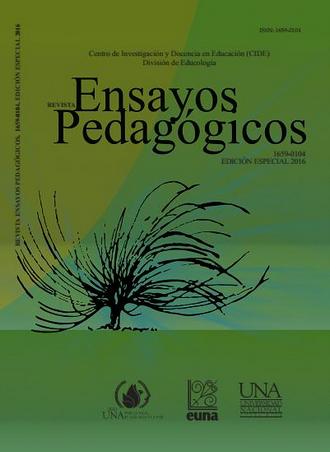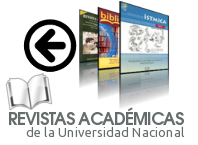Use of Social Networks in English and Pedagogy Teachers: Differences per Discipline?
DOI:
https://doi.org/10.15359/rep.esp-16.10Keywords:
social media, professors, higher education, pedagogy, English teaching, disciplinesAbstract
This paper shows the preliminary results of two graduate research projects whose objectives are to know how Information and Communications Technologies (ICT) are used by teachers in their teaching process in two different disciplines at the Universidad Veracruzana: English Language and Pedagogy. For the collection of data, a questionnaire from ”Brecha digital entre estudiantes y profesores de la Universidad Veracruzana: Capital cultura; trayectorias escolares y desempeño académico; y grado de apropiación tecnológica” was administered to 55% (35) of English Language teachers and 88% (44) of Pedagogy; this article shows the results related to the use of social media. The main results highlight that the use of e-mail and social media are the most widely used tools by the teachers in both disciplines with means of socialization, communication and information exchange. The differences are minimal in the use of social media, but it is important to point out that they are used more by Pedagogy than English Language teachers. Finally, the ends by setting ground for future researches focused on specialized social media for each discipline, media that exists, but that are not exploited to its fullest.
References
Adu-Manu, K., Arthur, J., y Yeboah, C. (2013). Challenges and opportunities for the implementation of social network technologies (SNTs) in teaching in universities in Ghana. IJCSI International Journal of Computer Sciences Issues, 10(5), 268-275.
Araujo, J. C. (Septiembre, 2014). El uso de blogs, wikis y redes sociales en la enseñanza de lenguas. Edutec-e- Revista electrónica de tecnología educativa. 49, 1-27.
Bartlett-Bragg, A. (2006). Reflections on pedagogy: reframing practice to foster informal learning
with social software. Recuperado de http://matchsz.inf.elte.hu/tt/docs/Anne20Bartlett-Bragg.pdf
Becher, T. (2001). Tribus y territorios académicos. Barcelona, España: Gedisa.
Boyd, D. M, y Ellison, N. B. (2008). Social network sites: Definition, history, and scholarship. Journal
of Computer-Mediated Communication, 13(1), article 11.
Buzzetto-Moore, N. (2012). Social networking in undergraduate education. Interdisciplinary Journal of Information, Knowledge, and Management, 7.
Cabero, J., Barroso, J., Llorente, M.C., y Marín, V. (2014). Las redes sociales como instrumentos para la formación. Percepciones de los alumnos universitarios hacia el trabajo en grupo. España: Grupo de Investigación didáctica.
Castells, M. (2001). The internet galaxy. Nueva York, EUA: Oxford University Press.
Castells, M. (2002). La era de la información. La sociedad red (Vol. I). México, D.F: Siglo XXI.
Crilla, D. (2011). Las redes sociales en el aula de idiomas. Análisis de Twiducate y Mi Cueva.
Revista Digital Wadi-red, 1(2).
De Haro, J. (2009). Las redes sociales aplicadas a la práctica docente. Recuperado de http://www.raco.cat/index.php/dim/article/viewFile/138928/189972
Devi, V., y Nayak, M. (2013). Go social; be universal. Indian Journal of Applied Research, 3(10), 1-3.
Erdocia, I. (2012). El aprendizaje autónomo a través de las redes sociales (Tesis de maestría). Instituto Cervantes. Recuperado de http://www.mecd.gob.es/dctm/redele/Material-RedEle/Biblioteca/2012bv13/2012_BV_13_45Iker%20Erdocia.pdf?documentId=0901e72b812fa7ea
Forbes. (2014). México primer lugar en penetración social media. Recuperado de http://www.forbes.com.mx/mexico-primer-lugar-en-penetracion-social-media/
Hernández, R., Fernández, C., Baptista, M. P. (2010). Metodología de la Investigación. México: McGraw-Hill.
Marín, V. (2014). Social networks and the University. The case of DIPRO 2.0. Recuperado de http://www.rieoei.org/deloslectores/6528Marin.pdf
Pew Research Center. (2014). Social media update 2014. Recuperado de http://www.pewinternet.org/2015/01/09/social-media-update-2014/
Seaman, J., y Tinti-Kane, H. (2013). Social media for teaching and learning. Boston, EUA: Pearson.
Sheliga, K. (2015). The web as a social machine. En Alexander von Humboldt Institut für Internet und Gesellschaft, Encore. Berlin, Alemania: AHIIG.
Sitthirak, C. (s.f.) Social media for language teaching and learning. Recuperado de http://164.115.22.25/ojs222/index.php/tuj/article/view/174
Túñez, M., y Sixto, J. (Julio,2012). The social networks like learning ennvironment: analysis of facebook use in the university teaching. Pixel-Bit. Revista de Medios y Educación, 41, 77-92.
Turkle, S. (2008). Always-on/Always-on-you: The tethered self. En J. E. Katz, Handbook of mobile communication studies. Cambridge, MA, EUA: MIT Press.
Downloads
Published
How to Cite
Issue
Section
License
Ensayos Pedagógicos is subscribed to the Attribution-NonCommertial-NoDerivatives 4.0 International Creative Commons Licence, which allows both authors and readers to freely download, store, copy, and distribute the final approved publisehd version of the manuscript (post-print) as long as this is done without commercial purposes, no derivative works are generated, and the source and author are mentioned. As well, Ensayos Pedagógicos declares that authors will remain the rightful owners of the copyrights of their work in perpetuity.







